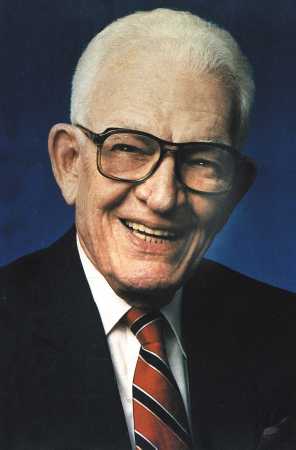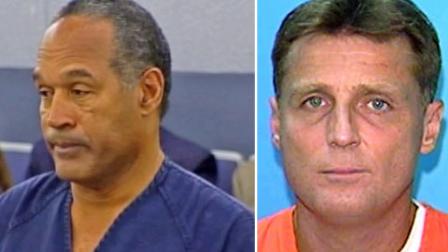Widgetized Section
Go to Admin » Appearance » Widgets » and move Gabfire Widget: Social into that MastheadOverlay zone
A Case of Mistaken Identity : Antihaitianismo in Dominican Culture
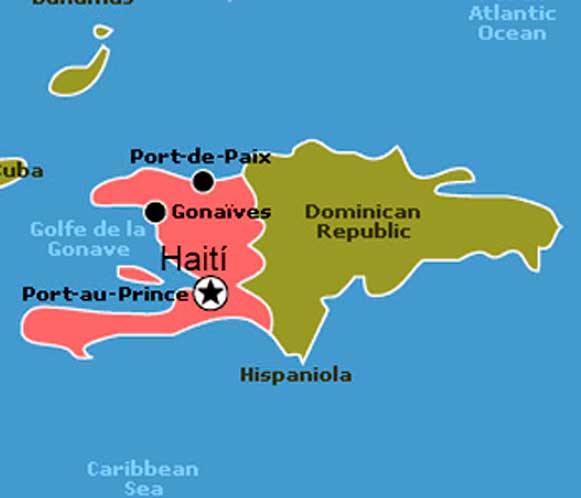
By Ernesto Sagás
For over a century and a half, Haiti and the Dominican Republic have shared the island of Hispaniola. Their relationship, however, has rarely been amicable. In the Dominican Republic, this antagonism has led to the creation of a set of anti-Haitian prejudices called antihaitianismo. Antihaitianismo is actually the present manifestation of the long-term evolution of racial prejudice, the selective interpretation of historical facts, and the creation of a nationalist Dominican false consciousness. That process, of course, did not take place spontaneously. It was orchestrated by powerful elite groups in the Dominican Republic with strong interests to defend.
The Origins of Antihaitianismo

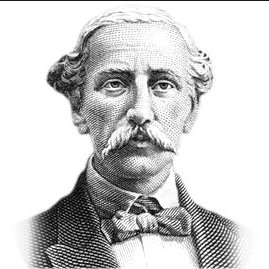
The early origin of what later came to be known as antihaitianismo is to be found in the racial prejudices of the Spanish inhabitants of the colony of Santo Domingo (Tolentino Dipp 1973, 1992). Spanish colonization in the 16th century brought sugar, slavery, and racial prejudice to the island. A white Spanish elite controlled the colony’s administration and ruled over a mixed population of creoles and slaves. On the other hand, the dominance of cattle ranching as the colony’s main economic activity lessened racial tensions and even promoted miscegenation. That does not mean that slaves were treated as equals. Slavery existed, slaves were mistreated, and slave rebellions were severely punished. Furthermore, the color of one’s skin indicated to a large degree one’s social standing and economic position (Tolentino Dipp 1973, 1992).
This status quo changed with the spectacular growth of the French colony of Saint-Domingue (on the western side of the island) in the 18th century. With half a million slaves and a stronger economy, the French colony was a powerful rival. The Spanish authorities constantly struggled to maintain the political and cultural integrity of their territory. As a consequence, the first glimpses of Dominican nationalism emerged in the 18th century as part of a differentiation struggle from the French (Pierre-Charles 1974, 28).
When Haiti became an independent state in 1804 (after a bloody revolution), this Hispanic nationalism not only persisted but was reinforced by the brutal campaigns of Haitian president Jean-Jacques Dessalines. The Santo Domingo colonists not only saw themselves as different, but they preferred to be anything but Haitian. These feelings were conceived and reproduced by the colonial elites who sought to maintain Spain’s sovereignty, even though the colony was ceded to France in 1795. In order to promote nationalist feelings, elites emphasized the Hispanic culture of the Santo Domingo colonists versus the French and, later, the Haitians.
According to them, the colonists of Santo Domingo were white, Catholic, and had a Hispanic culture. The Haitians, in particular, represented the opposite and the worst; they were black voodoo practitioners who had an African culture with a thin French veneer.
The Santo Domingo colonists, regardless of their color, soon started calling themselves blancos de la tierra, that is, creole (or local) whites (Moya Pons 1977, 280).
The Haitian occupation of Santo Domingo (1822-1844), although passively accepted by most of the population (and even celebrated by lower-class groups), was strongly rejected by the elites, who lost their privileges and administrative jobs to the occupation armies. Dominican elites further resented being at the mercy of individuals whom they considered inferior because of their skin color and social status. The great majority of Haitian army officers were ex-slaves themselves, with little or no education, and lacked the finesse and manners that elites regarded so highly. During the period of the Haitian occupation, many of these elite families left the country, a fact deplored by Joaquín Balaguer, who commented that Santo Domingo lost most of its « best » families at that time (Balaguer 1984, 59-60).
When the Dominican Republic became independent in 1844, elites portrayed this event as the realization of their efforts to maintain Hispanic-Catholic culture intact in the face of the Haitian occupation. As they stated in the independence manifesto of the Dominican Republic, « due to the difference of customs and the rivalry that exists between ones and the others [referring to Haiti and the Dominican Republic], there will never be a perfect union nor harmony » (Despradel 1974, 86).

José Francisco Peña Gómez, a famous dark-skinned Dominican politician who lost a presidential campaign to Joachim Balaguer when he was accused of being of Haitian ancestry.
With the Haitians out of the scene, Dominican elites regained their privileged social position and their high-level administrative posts.
In the face of repeated Haitian attempts to recover their former territory, the presence of antihaitianismo among the general Dominican population of the mid-19th century is not surprising. The independence struggle was often expressed in an anti-Haitian form in order to promote nationalism. What is more difficult to justify is the perpetuation of these anti-Haitian attitudes long after independence. By the time of the War of Restoration (1865), Haiti no longer planned to re-annex the Dominican Republic. As a matter of fact, the Haitian government even helped Dominican patriots in their struggle against the Spanish.
However, Dominican elites still professed their anti-Haitian prejudices, in part because they reflected their personal views about Haiti, and also because they employed antihaitianismo as an element of national cohesion and domination. These prejudices were reproduced at the popular level; being Dominican soon became identified with being anti-Haitian (Despradel 1974, 86). To this « nationalist » prejudice, Dominican elites added some of their old cultural and racial prejudices. Dominicans were portrayed as devout Catholics, while Haitians were voodoo sorcerers who believed in spirits and utilized black magic in mysterious ceremonies (Hoetink 1982, 181-192).
Finally, Dominicans were somatically « white, » proud descendants of the Spanish conquistadores, while Haitians were truly black, the sons and daughters of African slaves. It was not long before Dominicans occasionallly classified themselves as dark, but by no means black. Only Haitians were considered black. Therefore, race, culture, and nation were perceived as one by the Dominican elites. To be Dominican meant that one was Hispanic and not black, regardless of one’s skin tone.
The writings of important intellectuals of the late 19th century and early 20th century clearly reflect the anti-Haitian attitudes of the Dominican upper classes. José Gabriel García, Francisco Henríquez y Carvajal, and Américo Lugo, among others, expressed the general racial prejudices of the time, but with a strong anti-Haitian slant (Vega 1988, 26-30). Dominican literature at the turn of the century is even more prolific regarding anti-Haitian attitudes. Novels, short stories, and poems exalted « Dominican » traits, while denigrating Haitian influences to the point of making them appear barbaric. Tulio M. Cestero, Francisco Gregorio Billini, César Nicolás Penson, Federico García Godoy, F.E. Moscoso Puello, and Juan Antonio Alix developed a nationalist narrative and poetry that contrasted Dominican Hispanic values with Haiti’s African superstitions and customs (Vega 1988, 30-38).
One of the most important myths developed in the late 19th century that remains influential to this day is that of the Dominican indio. After the Dominican Republic regained its independence from Spain in 1865, Dominicans no longer looked at Spain as their fatherland. In their search for a new national identity, Dominicans elites looked at their Amerindian past, as some other Latin American nations had already done. The publication of the novel Enriquillo by Manuel de Jesús Galván (1909), a heroic portrayal of the indians’ resistance against enslavement by the Spanish colonizers, marks the high point of this indigenista literary movement.
Even though the Amerindian population of Hispaniola was exterminated in less than a century, the Dominican elites portrayed the Dominican people as the descendants of these brave indians and the Spanish colonists. It was a greater honor to have a rebellious indian as a predecessor than an African slave. Soon, Dominican mulattoes started considering themselves indios (an obvious reference to their claimed indian ancestry). Mulattoes, who make up the majority of the Dominican population, disappeared, to be replaced by the Dominican indio. Being indio also helped the mulatto to « whiten » his own perception of his color and race (Despradel 1974, 94-97). To hide a common African past, the words « black » and « mulatto » also disappeared from Dominican Spanish, and were replaced by the less traumatic and more socially-desirable indio. « Black » and « mulatto » referred to Haitians, who were considered the real blacks.
Antihaitianismo in the Trujillo Era

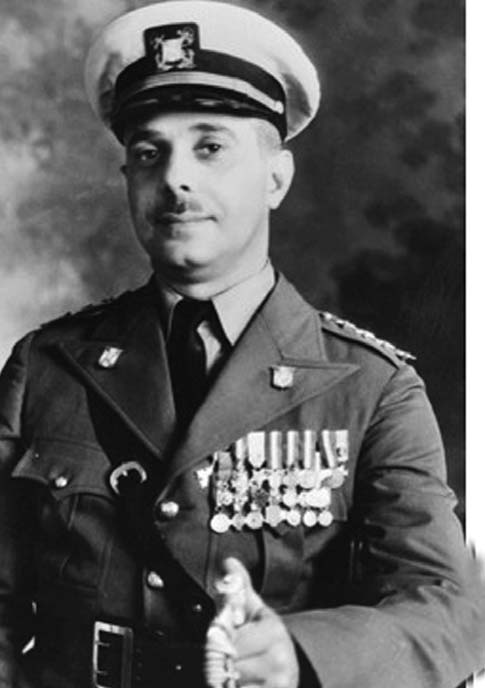
Between 1930 and 1961, the Dominican Republic was ruled by dictator Rafael L. Trujillo. Relations between Haiti and the Dominican Republic from 1930 to 1937 were essentially cordial. In 1937, however, a massacre of Haitians by the Trujillo regime marked a drastic turn in Trujillo’s Haitian policy. Relations between the countries were strained and Trujillo used the 1937 massacre as the starting point of his policy to secure, develop, and transform the Dominican borderlands into a national showcase. On the other hand, this policy was also designed by Trujillo to bolster his control over the national territory and to develop Dominican nationalism into a cultural shield against « foreign » (i.e. Haitian) influences. In order to do so, Trujillo recruited the services of some of the better-known intellectuals who remained in the Dominican Republic, particularly Manuel A. Peña Batlle and Joaquín Balaguer.
Manuel A. Peña Batlle embarked on the task of distorting Haitian-Dominican history to portray Haitians as hostile foreigners who were culturally and racially inferior to the Dominican people. In his famous address to people of the border town of Elías Piña, « El Sentido de una Política » (The Meaning of a Policy), Peña Batlle clearly displays the state’s official line regarding Haitians:
There is no feeling of humanity, nor political reason, nor any circumstantial convenience that can force us to look indifferently at the Haitian penetration. [Talking about the typical Haitian migrant] That type is frankly undesirable. Of pure African race, he cannot represent for us any ethnic incentive. Not well nourished and worse dressed, he is weak, though very prolific due to his low living conditions. For that same reason, the Haitian that enters [our country] lives afflicted by numerous and capital vices and is necessarily affected by diseases and physiological deficiencies which are endemic at the lowest levels of that society [Peña Batlle 1954, 67-68].
In his « Carta al Dr. Mañach » (Letter to Dr. Mañach), Peña Batlle defends Trujillo’s Haitian policy and places the Haitian-Dominican conflict into a distorted historical perspective. According to Peña Batlle, the current conflict between Haitians and Dominicans is just the modern version of the old conflict between the invading French buccaneers and the Spanish authorities. Peña Batlle establishes a rather flimsy historical bond between the contemporary Haitian migrant and the French invaders of the past. Just like the French buccaneers, the Haitian migrants of Peña Batlle’s time were portrayed as foreign invaders who coveted the whole island of Hispaniola. Based on these arguments, he attempts to justify Trujillo’s authoritarian policies:
In the Dominican Republic there should not be, there cannot be, a government so uninterested in the use of force that it turns itself, as it has happened many times, into an agent of Haitian expansionism. Democracy, as understood and exercised in some countries, is a luxury that we cannot afford. When will you Cubans, our dearest neighbors, understand that truth? Know this well, Minister [Mañach], as soon as the Haitians stop fearing us, they will bite us: silently, quietly, without you or anyone knowing about it [Peña Batlle 1954, 96].
Just as Peña Batlle defended Trujillo’s actions from a historical perspective, Joaquín Balaguer served as one of the regime’s most efficient and outspoken apologists. In La Realidad Dominicana (Balaguer 1947), considered the most brilliant defense of the Trujillo regime, Balaguer justifies Trujillo’s Haitian policy as part of the natural and inalienable right of the Dominican people to defend their culture and way of life.
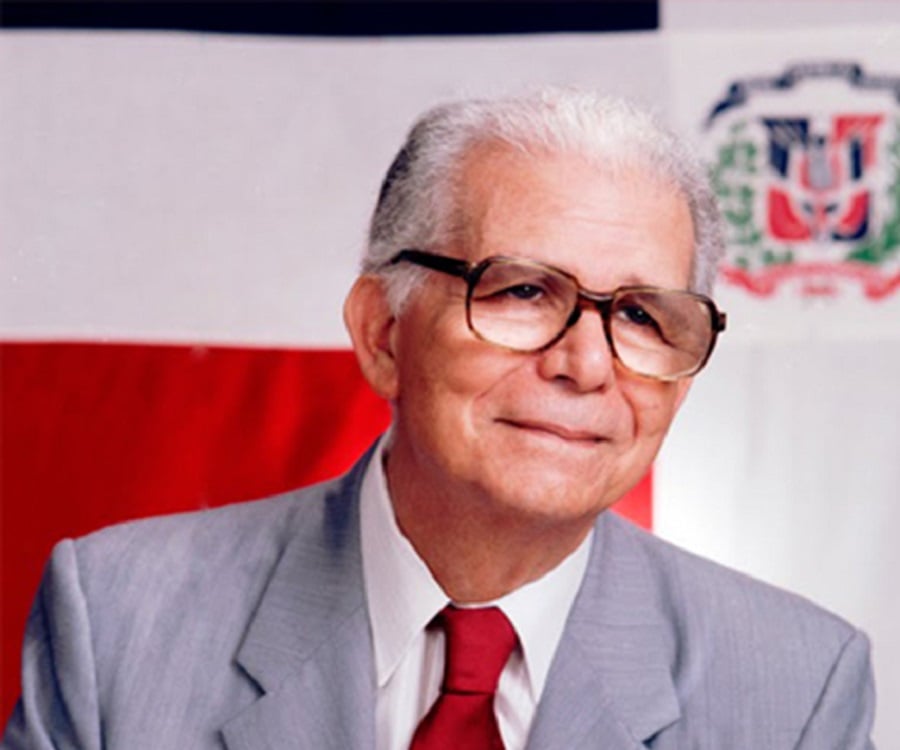
Joachim Balaguer
Consequently, there is no reason of justice nor of humanity that can prevail over the right of the Dominican people to subsist as a Spanish nation and a Christian community.The problem of race is, by consequence, the principal problem of the Dominican Republic. If the racial problem is of great importance for all countries, for Santo Domingo, by the reasons already mentioned, this issue is of an immense significance, since on it depends, in a certain way, the very existence of the nationality that for more than a century has been struggling against a more prolific race [Balaguer 1947, 123-125].
Notice again how Balaguer makes indistinct use of the terms « race » and « nation, » so as to pretend that Haitians and Dominicans not only belong to different nations, but also to completely different races. This argument became part of the official credo and was reproduced among the people through the efforts of Trujillo’s political machinery, including the official Partido Dominicano.
Trujillo also supported antihaitianismo ideology with actions. In a handbook for alcaldes pedáneos (rural mayors), Trujillo instructs them to watch out for « Haitianizing influences whose consequences will always be extremely fatal for Dominican society » (Ginebra 1940, 8). Law 391 imposed jail terms, fines, and sometimes deportation for those found practicing voodou or luá (Gaceta Oficial, 20 September 1943). These measures were aimed at further curbing any Haitian (or black) influences and at legitimizing and institutionalizing antihaitianismo by giving it the full support of the judicial system and the state bureaucracy. For almost 31 years the Dominican people were subjected to this ideological bombardment. Not surprisingly, just as vestiges of trujillismo still show up in Dominican culture, so does antihaitianismo remain a powerful force in the Dominican political culture.
Antihaitianismo Today
Balaguer’s « new » brand of antihaitianismo is detailed in his controversial best seller La Isla al Revés (The Upside Down Island or L’Ile a l’Envers in french). La Isla al Revés is basically a modified and updated version of his 1947 apology of the Trujillo Regime, La Realidad Dominicana, from which entire sections have been copied. In this new work, Balaguer once again defends the Dominican case. The Dominican Republic, he argues, has had the historical misfortune of living next to Haiti. Still, the Dominican Republic has been miraculously able to maintain its Hispanic-Catholic culture in the face of Haitian penetration (Balaguer 1984, 63). Balaguer then goes on to offer some distorted views of Dominican history:
The extinction of the indian race gave way for the population of Santo Domingo to be integrally constituted by European families, especially Spanish and French. Before the Treaty of Basel (1795), the colony’s population was formed by the best of the families that had migrated to America, attracted by gold or by the fascinating mystery of remote expeditions [Balaguer 1984, 59].
In this brief passage, Balaguer helps to perpetuate the myth of the white Dominican by ignoring the fact that there was a considerable number of blacks and mulattoes in the colony before 1795 (Moya Pons 1977, 378-379). Balaguer’s romantic notion of Dominican history is, unfortunately, shared by many Dominicans. Also widely shared are his 19th century notions of racial differences:
. . . the negro, abandoned to his instincts, and without the restraint on reproduction that a relatively high level of living imposes on all countries, multiplies himself with a speed similar to that of vegetable species [Balaguer 1984, 36].
Balaguer’s bigotry is not only limited to Haitians, but includes all members of the black race. Two related facts are important. First, that Joaquín Balaguer has been president of the Dominican Republic on six occasions. He is not an obscure writer, but a person who has the power and influence to impose his views on the rest of the population. Second, La Isla al Revés became a national best seller, which suggests that many educated Dominicans share Balaguer’s views.
Manuel Núñez, in El Ocaso de la Nación Dominicana (The Twilight of the Dominican Nation), tries to rescue some of the old trujillista arguments of nationalism and antihaitianismo by using the cultural argument. According to him, in order for the Dominican Republic to survive as a cultural entity in the face of Haitian aggression, decisive steps must be taken (Núñez 1990, 310-311). Núñez also attacks Dominican revisionist historians (such as Roberto Cassá), accusing them of being poor scholars, anti-Dominican, pro-Haitian, and even Marxist imperialists (Núñez 1990, 130-132). Clearly, antihaitianismo is far from over. New generations of Dominican intellectuals keep it alive by reproducing the same old myths and prejudiced arguments in slightly altered forms.
Antihaitianismo in Dominican Culture

Antihaitianismo permeates every aspect of Dominican culture from everyday talk, to literature and public education. A history of tense relations between the two countries, the creation of an anti-Haitian ideology by the 31-year-long Trujillo regime, and the reinforcement of these prejudices and distorted historical notions by subsequent administration have made antihaitianismo an integral part of the Dominican popular and political culture. Antihaitianismo is a set of attitudes that are acquired early in life and reinforced by the socialization process. Family and friends are the first agents of this process. More important, however, is the role played by public education. Public education, unlike the teachings of family and friends, is not a loose, uncoordinated, and incomplete process but is coordinated and formative. It is institutionalized, supported by the state, and is designed to form Dominican citizens. It is in school where Dominican children learn the historical « facts » that they will identify with and reproduce later in life.
Unfortunately, what most Dominican children learn at school is a national history full of distortions, myths, and prejudices (Franco 1979, 149). An analysis of Dominican history textbooks from the early 20th century to the present reveals a number of flagrant errors, romantic myths, and plenty of antihaitianismo. One of the most common myths is that of messiahnism. Juan Pablo Duarte, the nation’s leading hero and intellectual author of Dominican independence, is glorified to extremes. Joaquín Balaguer even compares him to Jesus Christ:
The father of the Fatherland had a conscience enticed by the figure of Christ and made in the image of that sublime redeemer of the human family. In order to find a figure with moral traits comparable to Duarte’s, it would be necessary to look at the history of saints and other blessed creatures. [Balaguer 1970, 201].
Another of the historical myths is that of the intervention of the Divine Providence on the side of Dominicans. After exalting the brilliant victories of the Dominican armies in the face of the more numerous Haitian armies, Balaguer adds, « The fact of [our] survival is one of those miracles that prove the wisdom and kindness with which Providence governs the events of the historic world » (Balaguer 1984, 63).
Dominican history textbooks also portray Haitians as the eternal enemies of the Dominican people. The Haitian invasions and the Haitian occupation (1822-1844) are the subjects of detailed descriptions that emphasize gory examples of Haitian atrocities. Haitians are portrayed as barbaric savages, the living incarnation of cruelty whose only objective was to destroy Hispanic culture in the Dominican Republic. The Haitian leader Jean-Jacques Dessalines was a « heroic monster that surpassed with his boldness and cruelty the boundaries that separate man from beast » (Balaguer 1962, 12). The Haitian invasion of 1805 was graphically described by several Dominican historians:
The destruction, the burning, and the killing were the wake that Haitians left in their retreat [Gimbernard 1974, 178].
The priest Don Juan Vásquez suffered a cruel death: he was burned alive in the chorus’ balcony, using as tinder the benches and other combustible objects of the church [Monte y Tejada 1953, 244].
The road that goes from Santiago to Cap Haïtien was covered with dead bodies, and like errant shadows, children that looked for their parents in vain were [Pichardo 1966, 67].
. . . scenes of horror frequently alternated by death, infused anxiety and fear into those that survived to face new disgraces, and to give testimony of the consummation of horrendous crimes [Logroño 1912, 162].
. . . quenching their brutal furor on that harmless attendance, from which very few were left alive, because even the officiating priest was spiked by their bayonets, in the middle of the horrendous uproar of that horde of savages [J.G. García 1968, 319].
In other cases, such as the Historia Gráfica de la República Dominicana (Illustrated History of the Dominican Republic), by José Ramón Estella (1986) who was a Spanish immigrant, the text is accompanied by detailed drawings in which Haitians are always portrayed with crude and ape-like features, while Dominicans are always drawn light-skinned and with European features (Estella 1986, 71-181). As a result of this manipulation and distortion of Dominican history in school, Dominican children acquire these attitudes and beliefs and make them their own. They often grow up despising and discriminating against Haitians for their past atrocities and perceiving themselves as white Hispanics vis-à-vis the Haitian black.
In order to perpetuate this false consciousness, the Dominican government has institutionalized many of the racist elements of Dominican culture. For example, the word indio is commonly used to describe the great majority of Dominican mulattoes. The Dominican government uses indio as a skin color descriptor in the national identity card that every adult Dominican must have. That way, indio is no longer a slang term, but an official racial category, accepted and used by the Dominican government for identification and classification purposes. Most Dominicans fall within the indio category. Those with a darker skin tone are labeled moreno, but actually very few Dominicans are labeled black, due to the term’s pejorative connotations.
In conclusion, antihaitianismo has had a long and intricate evolution. From its origins as Hispanic racism, to its transformation into anti-Haitian nationalism, to its culmination as Trujillo’s state ideology, antihaitianismo has had one objective: the protection of powerful elite interests through the subjugation of the lower (and darker) sectors of the Dominican population. Antihaitianismo serves elite interests well and has even been accepted by the great majority of the Dominican people as part of their political culture, thereby institutionalizing and giving it the moral legitimacy that it lacks.
References
- Balaguer, Joaquín. 1947. La Realidad Dominicana: Semblanza de un País y de un Régimen. Buenos Aires: Imprenta Ferrari Hermanos.
- Balaguer, Joaquín. 1962. El Centinela de la Frontera: Vida y Hazañas de Antonio Duvergé. Buenos Aires: Artes Grãficas.
- Balaguer, Joaquín. 1970. El Cristo de la Libertad: Vida de Juan Pablo Duarte. Santo Domingo: Fundación de Crédito Educativo.
- Balaguer, Joaquín. 1984. La Isla al Revés. Santo Domingo: Librería Dominicana.
- Despradel, Lil. 1974. « Las Etapas del Antihaitianismo en la República Dominicana: El Papel de los Historiadores. » In Política y Sociología en Haití y la República Dominicana, ed.
- Gérard Pierre-Charles. Mexico: UNAM. Estella, José Ramón. [1944] 1986. Historia Gráfica de la República Dominicana. Reprint. Santo Domingo: Taller.
- Franco, Franklin J. 1979. Santo Domingo: Cultura, Política e Ideología. Santo Domingo: Editora Nacional.
- García, José Gabriel. 1968. Compendio de la Historia de Santo Domingo. 4th ed. 4 vols. Santo Domingo: Publicaciones ¡Ahora!.
- Gimbernard, Jacinto. 1974. Historia de Santo Domingo. 5th ed.Santo Domingo: Editora Cultural Dominicana.
- Ginebra, Augusto. 1940. Principales Deberes de un Buen Alcalde Pedáneo en la Era de Trujillo. Puerto Plata: N.P.
- Hoetink, Harry. 1982. The Dominican People, 1850-1900: Notes for a Historical Sociology. Trans. Stephen K. Ault. Baltimore, MD: The Johns Hopkins University Press.
- Logroño, Arturo. 1912. Compendio Didáctico de Historia Patria. Santo Domingo: Impresora la Cuna de América.
- Monte y Tejada, Antonio del. 1953. Historia de Santo Domingo. 3rd ed. 3 vols. Ciudad Trujillo: Impresora Dominicana.
- Moya Pons, Frank. 1977. Historia Colonial de Santo Domingo. 3rd ed. Santiago: Universidad Católica Madre y Maestra.
- Núñez, Manuel. 1990. El Ocaso de la Nación Dominicana. Santo Domingo: Alfa y Omega.
- Peña Batlle, Manuel A. 1954. Política de Trujillo. Ciudad Trujillo (Santo Domingo): Impresora Dominicana.
- Pichardo, Bernardo. 1966. Resumen de Historia Patria. 5th ed. Santo Domingo: Editorial Librería Dominicana.
- Pierre-Charles, Gérard. 1974. « Génesis de las Naciones Haitiana y Dominicana. » In Política y Sociología en Haití y la República Dominicana, ed. Gérard Pierre-Charles. Mexico: UNAM.
- Tolentino Dipp, Hugo. 1973. « El Fenômeno Racial en Haití y en la República Dominicana. » In Problemas Dominico-Haitianos y del Caribe, ed. Gérard Pierre-Charles. Mexico: UNAM.
- Tolentino Dipp, Hugo. 1992. Raza e Historia en Santo Domingo: Los Orígenes del Prejuicio Racial en América. 2nd ed. Santo Domingo: Fundación Cultural Dominicana.
- Vega, Bernardo. 1988. Trujillo y Haití, Volumen I (1930-1937). Santo Domingo: Fundación Cultural Dominicana.
